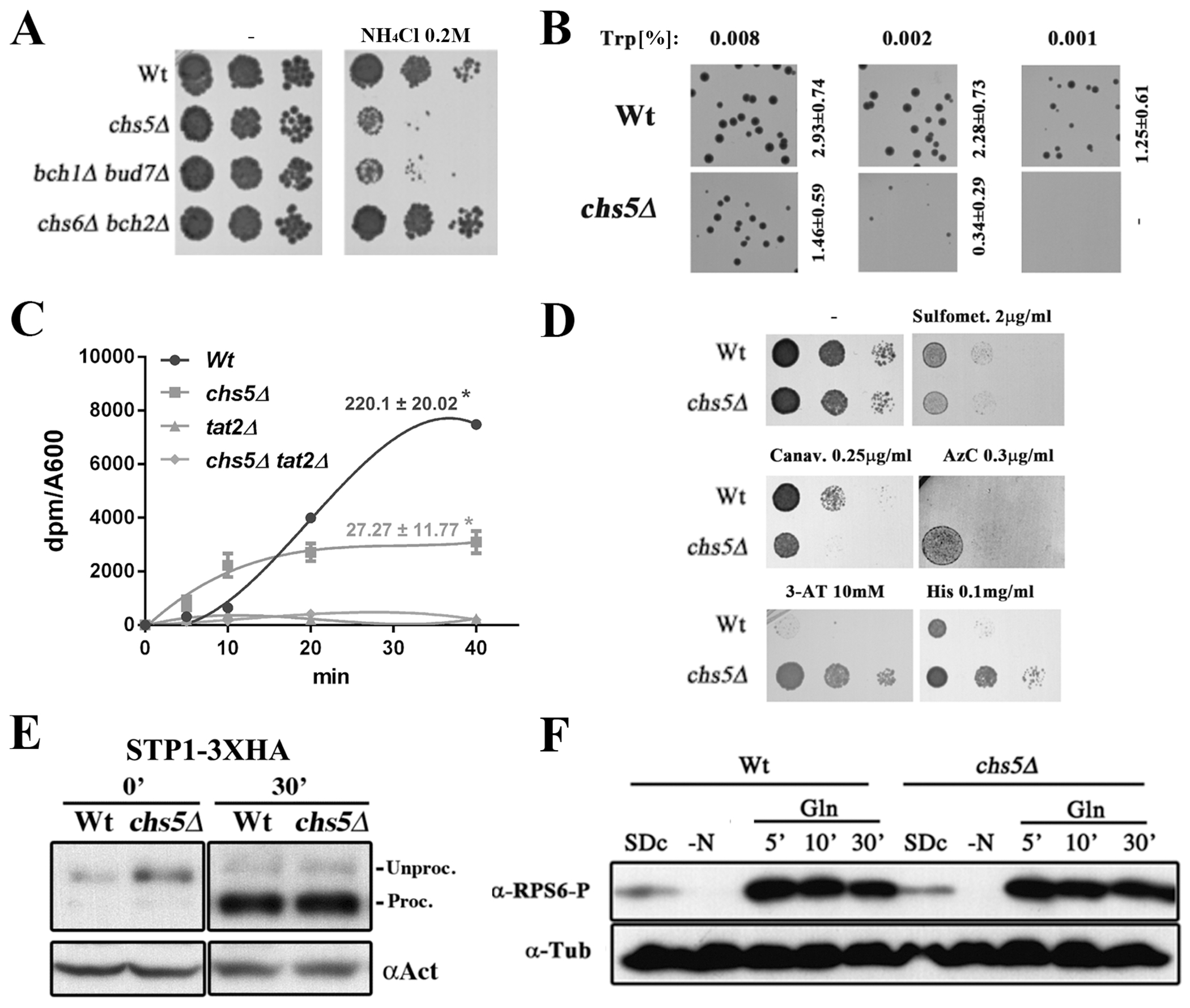Figure 1.

Ammonium sensitivity of the exomer mutants is due to defects in amino acid uptake. (A) Overnight (O/N) cultures of the indicated strains in the W303 genetic background were diluted and plated onto YEPD media supplemented with 0.2 M NH4Cl. Note the similar level of sensitivity of the chs5∆ and bch1∆/bud7∆ mutants. (B) O/N cultures of the indicated strains in the W303 background were diluted and spread on synthetic defined media (SD) supplemented with the indicated concentrations of tryptophan. Note that low concentrations (%) of tryptophan (Trp) allowed the wild-type strain to completely grow, but was unable to efficiently support the growth of the chs5∆ mutant. The numbers indicate the average diameter ± standard deviation of the colonies growing on the different media quantified using ImageJ (Macro3). Also refer to supplemental Figure S1 for additional data on ammonium sensitivity. (C) L-[5-3H]-tryptophan uptake in SD media by the indicated X2180-derived prototrophic strains. Numeric values indicate the incorporation rate (dpm/A600/min) calculated as the slope of the linear regression made using 10 to 40 minutes time points. Note the absence of Trp incorporation in the tat2∆ mutants used as the control. (D) Sensitivity of the indicated X2180-derived strains to toxic amino acids analogs. Growth was analyzed in YEPD supplemented with the indicated concentrations of the following analogs: Sulfometuron-metil; L-canavanine; L-azetidin-2-carboxilate (AzC); 3-aminotriazole (3-AT) and L-histidine as indicated. (E) Western blot of the total protein from the cellular extracts of strains carrying STP1-3xHA integrated at the chromosomal locus. Cultures starved for 1 hour in YNB-N-aa media were transferred to rich YEPD media and samples were taken at 0 and 30 minutes. Note the similar processing of the Spt1 transcription factor in the wild-type and chs5∆ strains. (F) Induction of Rsp6 phosphorylation after adding glutamine. X2180 strains grown on SD complete media were transferred to media lacking a nitrogen source for 1h; glutamine (500 μg/ml) was then added to the media. Note that the kinetics of the phosphorylation induced in the wild type and chs5∆ are similar. Phosphorylation was determined by Western blot using a phospho-(Ser/Thr) Akt substrate antibody (#9611s, Cell SignalingTech). Also refer to supplemental Figure S2 for the rationale behind these experiments.
